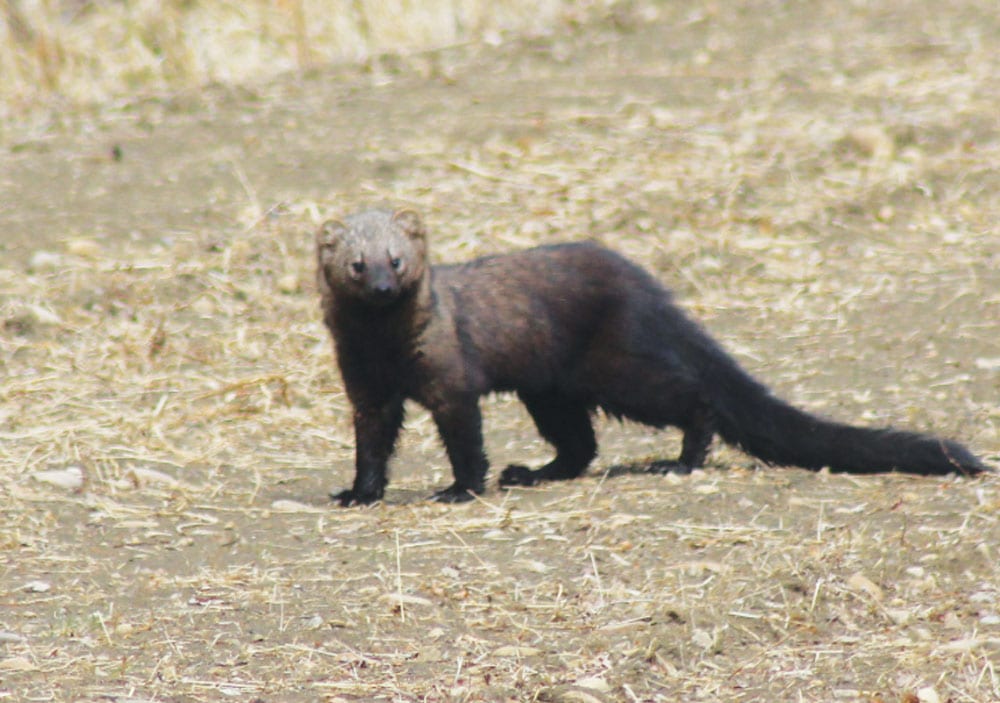Fishers are members of the weasel family. They are primarily nocturnal animals, but they can be active during the day. Fishers are solitary creatures and have a wide range across Canada and regions of the United States. While they are agile tree climbers, they spend most of their time on the ground.
Fishers grow to be 80 – 112 cm (32 – 43 in) from head to tail, weighing between 1.5 and 6 kg (3 – 13 lbs). They are carnivorous, mostly eating birds and small mammals, including rabbits, hares, rodents, and squirrels. Fishers are also one of the few species to prey on porcupines. While not a mainstay of the fisher’s diet, they will eat reptiles, carrion, and fruit. Fishers hunt all through the year, remaining active through the winter.
Fishers were heavily hunted and trapped for their pelts through the late 1800s and early 1900s and currently have a “sensitive” species status in Alberta. They are considered uncommon to rare in the province, and their population status is unknown. Fishers make their homes in burrows in the ground, hollow trees, logs, and stumps. Female fishers produce litters of three offspring on average after an 11-month gestation period.
Even though their name implies it, fishers are not active predators of fish. The fisher’s name is thought to have come from a corruption of the Dutch name for the European polecat, the “fitch” or “fitchet.”



